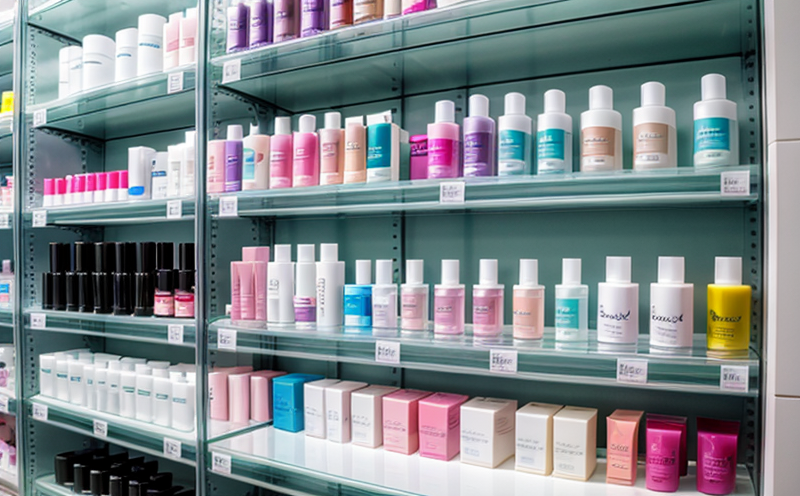Water Resistance Stability Testing in Sunscreens
The stability and shelf life of sunscreens are critical factors that determine their effectiveness in protecting consumers from harmful ultraviolet (UV) radiation. Water resistance is a key performance indicator for sunscreens, especially those intended for use during water activities such as swimming or surfing. This test evaluates the sunscreen's ability to maintain its UV protection level after being exposed to water and sweat. The process involves applying the sunscreen on human skin, exposing it to water under controlled conditions, and then assessing the remaining SPF (Sun Protection Factor) of the product.
The importance of this testing cannot be overstated, as it ensures that the consumer receives the expected level of protection even after extended periods in water. The International Organization for Standardization (ISO) specifies the procedures for conducting water resistance tests on sunscreens under ISO 24738:2017. This international standard provides detailed guidelines for the experimental setup, specimen preparation, and evaluation methods.
The test is typically conducted using a rotating drum with deionized water at 37°C ± 1°C. The sunscreen is applied to human volunteers' skin in a specific manner, then exposed to the rotating drum for a predetermined period (usually 40 minutes or up to 200 minutes). Following exposure, the sunscreen is reapplied and tested again after drying. This process ensures that any loss of UV protection due to water contact can be accurately measured.
During the test, it's crucial to monitor not only the SPF but also other parameters such as the water content in the product, which can affect its stability. Additionally, the viscosity and consistency of the sunscreen must remain within acceptable limits after exposure to water. The testing environment should mimic real-world conditions as closely as possible, including humidity levels, temperature, and light exposure.
The results are typically reported according to ISO standards, indicating both the initial SPF value before water resistance testing and the remaining SPF value post-test. Compliance with these international standards is essential for manufacturers looking to meet regulatory requirements in various markets worldwide.
Why It Matters
The water resistance stability test ensures that sunscreens provide consistent protection, which is especially important during prolonged exposure to water. This consistency is vital because the effectiveness of a sunscreen can decrease significantly when it comes into contact with water or sweat. By conducting this test, manufacturers can ensure that their products meet the necessary standards and maintain their performance under real-world conditions.
Regulatory compliance is another key reason for performing these tests. Many countries have strict regulations regarding the labeling of sunscreens, including claims about water resistance. For instance, the Food and Drug Administration (FDA) in the United States requires that any product labeled as "water-resistant" must pass the water resistance test specified by FDA guidelines. Failure to meet these standards can result in legal consequences for manufacturers.
From a consumer perspective, knowing that a sunscreen will maintain its protective properties even when exposed to water is reassuring. This knowledge enhances trust and satisfaction, which are crucial factors in brand loyalty and repeat purchase behavior. Additionally, the test helps to differentiate between high-quality products and those that may not perform as expected.
Why Choose This Test
- To ensure compliance with international standards such as ISO 24738:2017.
- To validate the water resistance claims made on sunscreen labels.
- To guarantee consistent performance of sunscreens under real-world conditions.
- To provide data that supports marketing and labeling claims effectively.
Choosing this test allows manufacturers to enhance their product quality, ensure regulatory compliance, and build consumer confidence. By investing in water resistance stability testing, companies can differentiate themselves in a competitive market while providing consumers with high-quality products they can trust.





